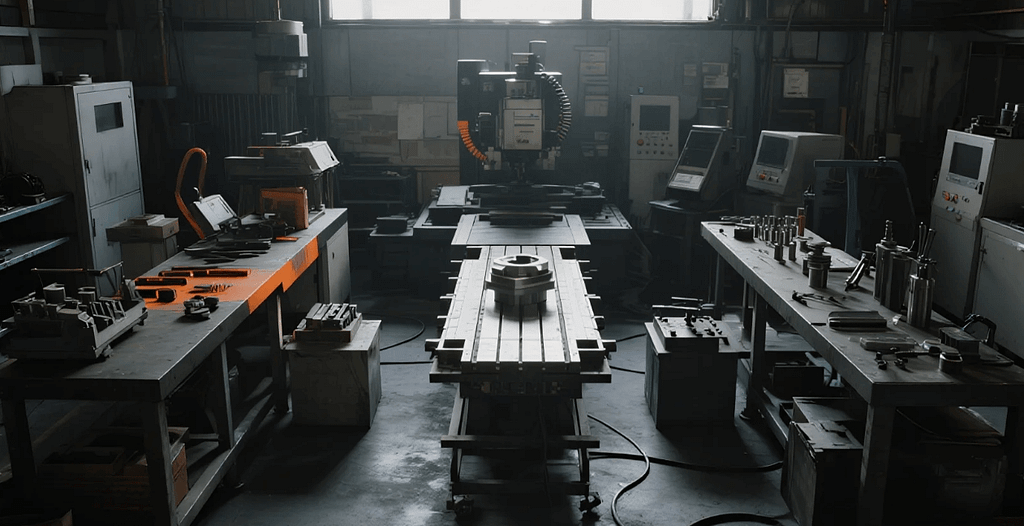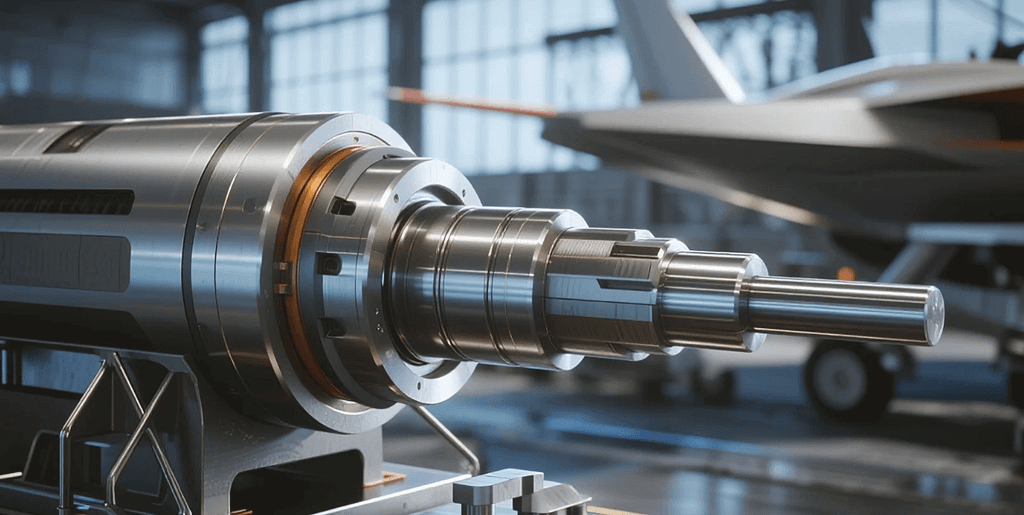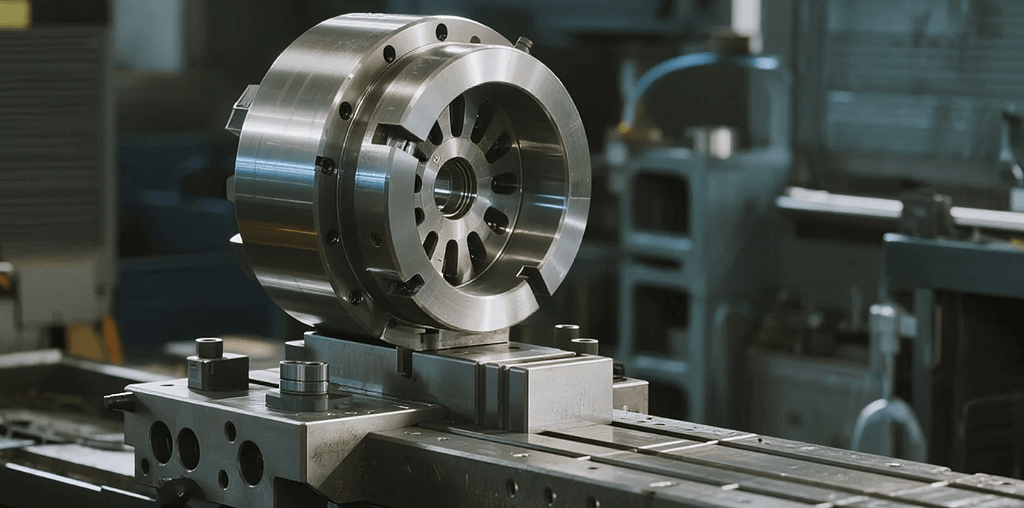In the unforgiving environment of the aerospace industry, where performance directly correlates with safety and success, the demand for components of impeccable quality is absolute. This unwavering requirement drives the need for superior aerospace precision machining. This advanced manufacturing discipline is not merely about making parts; it’s about crafting mission-critical components with tolerances so tight they defy conventional understanding, using materials designed for extreme conditions. This article will delve into the essence of superior aerospace precision machining, highlighting its unique characteristics and its pivotal role in the creation of advanced industrial models. For companies like CAPtec and others serving the aerospace sector with high-fidelity prototypes and critical components, understanding this specialized field is essential for unlocking innovation, ensuring reliability, and navigating the complexities of modern air and space travel.
The Imperative of Superior Aerospace Precision Machining
The aerospace industry operates under a zero-failure paradigm, where even the slightest imperfection can have catastrophic consequences. From commercial airliners to cutting-edge spacecraft, every part must perform flawlessly under immense stress, extreme temperatures, and volatile environments. This is precisely where superior aerospace precision machining differentiates itself. It goes beyond standard precision by incorporating an even higher degree of control, validation, and specialized expertise to meet the aerospace industry’s incredibly demanding specifications. This includes micron-level accuracy, exceptional surface integrity, and full material traceability, all while working with some of the most challenging materials known to engineering.
Hallmarks of Excellence in Aerospace Machining
Achieving superior aerospace precision machining isn’t merely about having advanced machines; it involves a confluence of specialized equipment, meticulous processes, and unparalleled human expertise.
Ultra-Tight Tolerances and Geometric Accuracy
The most distinguishing characteristic of superior aerospace precision machining is its capacity to consistently hold exceptionally tight tolerances, often measured in sub-micron levels. For example, a critical engine component might require a bore diameter accurate to within a few thousandths of a millimeter, or a complex structural bracket might need precise angles and contours to distribute stress evenly. Achieving this relies on:
- Advanced Multi-Axis CNC Machines: These include 5-axis, 7-axis, and even 9-axis machines, allowing for highly complex geometries to be machined in a single setup. This minimizes human error from re-fixturing and ensures seamless transitions between surfaces.
- Thermal Management Systems: Temperature fluctuations can cause material expansion or contraction. Superior machines often incorporate sophisticated thermal compensation to maintain accuracy in dynamic machining environments.
- Vibration Dampening: Even minuscule vibrations can affect surface finish and accuracy. High-end aerospace machines are built with highly rigid structures and active dampening systems to eliminate chatter.
- High-Resolution Metrology: Integrated and external measurement systems, such as CMM (Coordinate Measuring Machines) with laser probes, ensure continuous verification of part dimensions throughout the machining process and rigorous final inspection.
Flawless Surface Finishes and Material Integrity
Beyond dimensional accuracy, the surface finish of aerospace components is critical for performance and longevity. A perfectly smooth surface reduces friction, improves aerodynamic efficiency, and prevents stress concentrations that could lead to fatigue cracking. Superior aerospace precision machining achieves these finishes through:
- Optimized Tool Paths: Sophisticated CAM (Computer-Aided Manufacturing) software generates highly refined tool paths that minimize cutting forces and ensure consistent material removal.
- Specialized Tooling: Diamond-tipped tools, ceramic inserts, and custom geometries are often used to achieve superior finishes and extend tool life when machining hard aerospace alloys.
- Controlled Cutting Environments: Precise control of cutting fluids and chip evacuation prevents material re-cutting and heat buildup, both of which can degrade surface quality.
- Subsurface Integrity: It’s not just the surface; the machining process must not induce micro-cracks or alter the material’s crystalline structure beneath the surface, which could compromise fatigue life. This requires careful control of cutting parameters.
Expert Knowledge of Aerospace Materials
Aerospace components are typically made from advanced materials chosen for their unique properties under extreme conditions. These materials are often challenging to machine, requiring specialized knowledge and techniques. Key materials include:
- Titanium Alloys (e.g., Ti-6Al-4V): Known for their high strength-to-weight ratio and corrosion resistance, but notoriously difficult to machine due to their reactivity and heat retention.
- Nickel-Based Superalloys (e.g., Inconel, Hastelloy): Excellent for high-temperature applications (like jet engines) due to their creep and corrosion resistance, but extremely tough and prone to work hardening during machining.
- High-Strength Aluminum Alloys (e.g., 7075, 2024): Valued for their light weight and strength, but require careful chip management and cooling to prevent warping.
- Exotic Steels and Composites: Used for specific applications where extreme wear resistance or stiffness is required.
An expert in superior aerospace precision machining possesses deep understanding of these materials’ unique characteristics and how to machine them effectively without compromising their integrity.
Stringent Quality Control and Traceability
Quality control in aerospace is non-negotiable. Every component must meet exact specifications, and its entire manufacturing history must be traceable. This includes:
- In-Process Monitoring: Real-time sensors and software monitor machine performance, tool wear, and part dimensions throughout the machining cycle.
- Post-Process Inspection: Utilizing highly accurate metrology tools, including CMMs, laser scanners, and profilometers, to verify every critical dimension and surface parameter.
- Material Traceability: Maintaining detailed records of raw material batches, heat treatments, and every manufacturing step to ensure full accountability and rapid problem identification if an issue arises.
- Compliance with Industry Standards: Adherence to rigorous standards like AS9100 (aerospace quality management system) and Nadcap (special processes accreditation program) is mandatory.

Superior Aerospace Precision Machining for Industrial Models
For companies like CAPtec specializing in precision industrial models for the aerospace sector, superior aerospace precision machining is not merely a capability; it is the absolute foundation of their service offering. These models are far more than visual aids; they are critical tools for design validation, functional testing, and risk mitigation throughout the aerospace product development lifecycle.
High-Fidelity Prototypes for Critical Validation
In aerospace, the cost of error in final production is astronomical. Therefore, high-fidelity prototypes are indispensable. Superior aerospace precision machining enables the creation of industrial models that precisely replicate the form, fit, and critical functions of the final flight-ready components.
For instance, a prototype of a new aircraft engine turbine blade, machined to exact aerodynamic contours and internal cooling passages, can undergo rigorous wind tunnel or thermal testing. Similarly, a precisely machined model of a spacecraft’s optical system mounting interface allows engineers to confirm alignment, stability, and vibration dampening capabilities. This level of physical validation, made possible by superior machining, is crucial for identifying and rectifying design flaws before expensive production tooling is committed, significantly mitigating financial and safety risks.
Exacting Form, Fit, and Assembly Verification
Aerospace systems are complex integrations of numerous components, where every part must fit seamlessly and precisely. Superior aerospace precision machining allows for the creation of models that facilitate meticulous verification of how these components interact. A perfectly machined prototype of a landing gear assembly or a fuselage section allows engineers to confirm clearances, mounting points, and overall assembly sequences. This proactive verification process helps identify and resolve potential assembly issues, interference problems, or maintenance challenges early in the design phase, saving countless hours and resources during full-scale manufacturing.
Rigorous Functional and Environmental Testing
Aerospace models often endure demanding functional and environmental tests. Superior aerospace precision machining ensures these models can withstand the simulated stresses, temperature extremes, and vibrational forces they will encounter in operation. For example, a prototype of an avionics enclosure can be machined to exact specifications for thermal cycling or vibration testing, providing accurate data on its performance under simulated flight conditions. The robust nature and precise material properties achieved through superior machining mean that test results are reliable and directly applicable to the final product’s performance and safety.
Accelerating Design Iteration and Certification
The ability to rapidly produce highly accurate, functional prototypes through superior aerospace precision machining significantly accelerates the overall product development timeline. Designers and engineers can quickly iterate on designs, moving from conceptual sketches to tangible models in a fraction of the time compared to less precise or traditional methods. This accelerated cycle allows for more frequent design revisions, faster feedback loops, and ultimately, a more refined and optimized final product reaching regulatory bodies sooner. For certifications, precisely machined models can be used for initial functional and non-destructive evaluations, providing valuable data to support compliance with stringent industry standards like AS9100.
Partnering for Excellence: Choosing a Superior Aerospace Precision Machining Service

For aerospace companies seeking to bring their cutting-edge designs to fruition, selecting the right partner for superior aerospace precision machining is a mission-critical decision.
Unwavering Commitment to Quality and Compliance
Prioritize partners with a demonstrated, unblemished track record of quality and strict adherence to aerospace industry standards (e.g., AS9100, ISO 9001, Nadcap). This includes comprehensive documentation, robust quality management systems, and full material traceability from raw material to finished part.
Advanced Capabilities and Specialized Equipment
Look for providers equipped with the latest generation of multi-axis CNC machines, sophisticated metrology tools, and the capability to machine a wide array of aerospace-grade materials. Expertise in complex geometries, thin-wall machining, and intricate internal features is also crucial.
Deep Engineering Expertise and Collaborative Approach
A truly superior partner will offer more than just machining. They should possess deep engineering knowledge, provide valuable Design for Manufacturability (DFM) feedback, and collaborate closely with your design team to optimize parts for performance, machinability, and cost-effectiveness.
Proven Track Record and Industry Reputation
Investigate their experience with similar projects and their reputation within the aerospace community. Case studies, client testimonials, and industry recognition can provide strong indicators of their capabilities and reliability.
The Future Trajectory of Superior Aerospace Precision Machining
The landscape of superior aerospace precision machining is in continuous evolution, driven by relentless innovation in materials science, advanced robotics, and artificial intelligence. We can anticipate further advancements in intelligent machining processes that adapt in real-time to material properties, predictive analytics for tool wear, and even more sophisticated additive manufacturing techniques that complement subtractive machining for hybrid components. For industrial models, this means an ever-increasing ability to create prototypes that are virtually indistinguishable from final production parts in terms of performance and reliability, pushing the boundaries of realism and functional validation. The unwavering commitment to safety, quality, and ethical practices will continue to guide these transformative advancements, ensuring that aerospace remains at the pinnacle of engineering achievement.
Conclusion
Superior aerospace precision machining is the bedrock upon which the future of air and space travel is built. Its unparalleled accuracy, capacity for complex geometries, and meticulous attention to material integrity make it indispensable for every stage of aerospace product development. For companies like CAPtec providing industrial model services, specializing in this high-stakes domain offers a profound opportunity to contribute to groundbreaking innovation. By transforming visionary digital designs into tangible, high-performance prototypes and components, superior aerospace precision machining ensures the safety, efficiency, and reliability that define success in the skies and beyond. It is the ultimate commitment to quality, enabling mankind to reach ever greater heights.
FAQ
Q1: What makes superior aerospace precision machining different from standard precision machining?
A1: Superior aerospace precision machining involves an even higher degree of control, tighter tolerances (often sub-micron), specialized equipment for aerospace-grade materials, and stringent quality control/traceability to meet the zero-failure demands of the aerospace industry.
Q2: What types of materials are most challenging to machine in aerospace?
A2: Titanium alloys and nickel-based superalloys (like Inconel) are among the most challenging due to their hardness, heat retention, and tendency to work-harden, requiring specialized tools and machining strategies.
Q3: How do industrial models created with superior aerospace precision machining aid product development?
Q3: They enable high-fidelity validation of aerodynamic and structural designs, precise form/fit/assembly verification, rigorous functional and environmental testing, and acceleration of design iteration and certification processes.
Q4: What role does multi-axis CNC technology play in superior aerospace precision machining?
Q4: Multi-axis CNC machines (e.g., 5-axis, 7-axis) are crucial for creating the complex, intricate geometries, thin walls, and contoured surfaces common in aerospace components, often in a single setup, minimizing error.
Q5: What are the key quality certifications for an aerospace precision machining service?
Q5: Essential certifications include AS9100 (aerospace quality management system) and Nadcap (for special processes like heat treatment or non-destructive testing), demonstrating a commitment to the highest quality standards.
Q6: Can superior aerospace precision machining contribute to lighter aircraft components?
Q6: Yes, by enabling the creation of highly optimized designs with intricate internal structures, thin walls, and topology-optimized forms, it significantly contributes to producing lighter yet stronger aerospace components, improving fuel efficiency.
Q7: How important is material traceability in aerospace precision machining?
Q7: Material traceability is absolutely critical. Every component must have a documented history from raw material batch to final manufacturing steps, ensuring accountability, facilitating recalls if needed, and supporting safety regulations.
